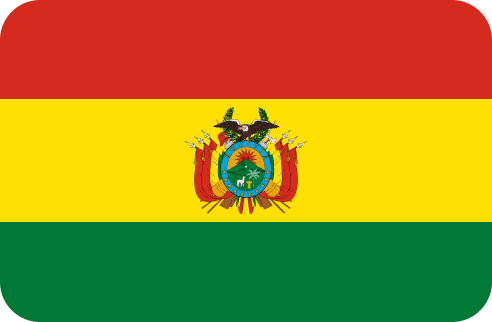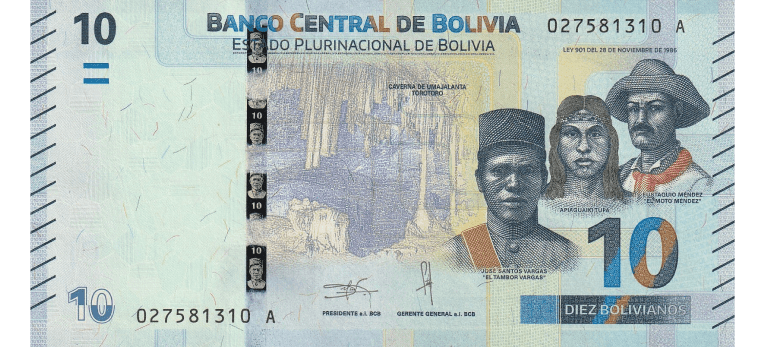Introduce país o moneda de destino:



El boliviano (BOB) es la moneda oficial de Bolivia y fue puesta en circulación en noviembre de 1987. Anteriormente, estuvo en curso entre 1864 y 1963, fecha en la que fue reemplazado por el peso boliviano. Su símbolo es Bs y el Banco Central de Bolivia lo emite.

Los billetes de Bolivia actuales son de 10, 20, 50, 100 y 200 BOB. Todos son de papel. Algunos diseños de la serie original de 1986 aún siguen en circulación. Además, antiguamente había billetes de 0,01, 0,05, 1, 2 y 5 bolivianos. Ahora son piezas de coleccionista.

Las monedas de Bolivia en circulación son de 10, 20 y 50 centavos, y también de 1, 2 y 5 bolivianos. Un boliviano equivale a 100 centavos. En el anverso, todas tienen la inscripción «la unión es la Fuerza» a modo de emblema nacional.

La nueva serie de billetes de bolivianos, emitida entre 2018 y 2019, ha recibido varios premios por ser los billetes más seguros de Latinoamérica. Contienen muchos elementos que hacen casi imposible su falsificación y que ayudan a luchar contra el blanqueo de capitales.

El diseño de la moneda de 2 bolivianos cambió drásticamente, puesto que se confundía por tamaño con la de 1 BOB. Actualmente, la primera tiene forma de un polígono de once caras, mientras que la segunda es redonda y de bordes lisos.




*Los billetes y monedas corresponden a la serie emitida más nueva y son de referencia. Pueden variar los colores y pueden existir más diseños de los que se muestran.